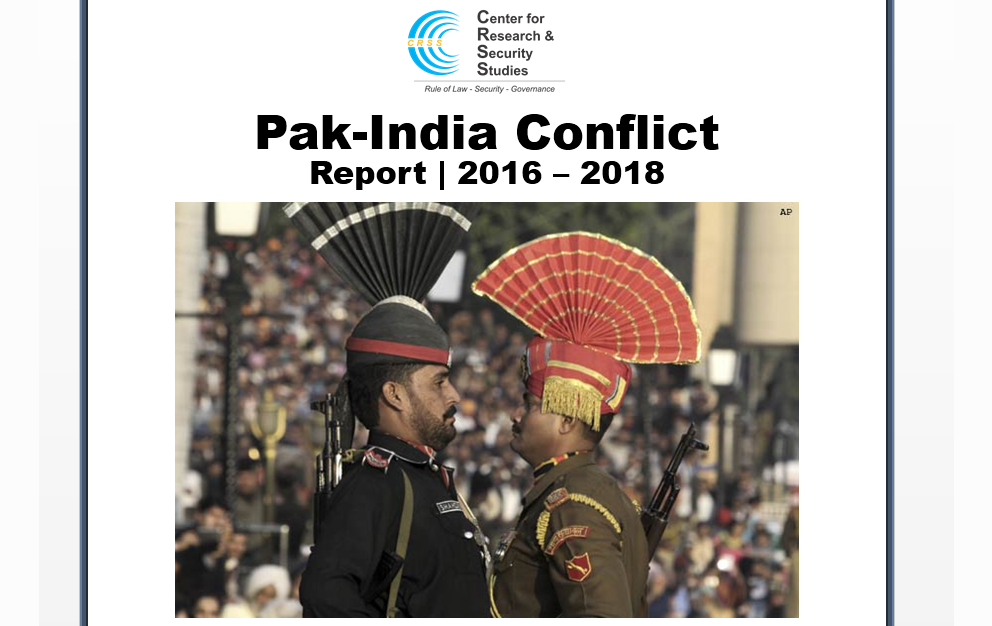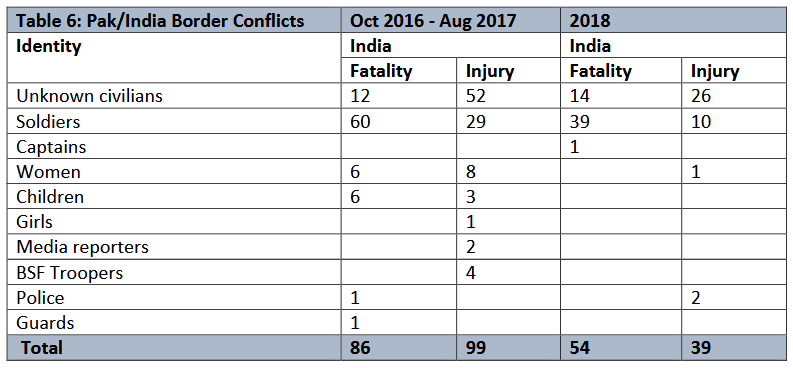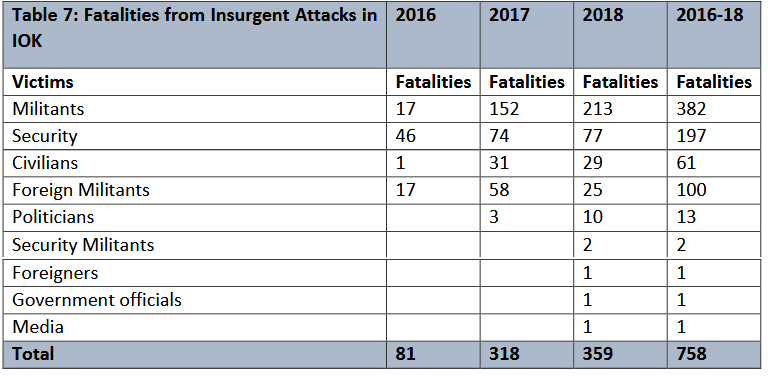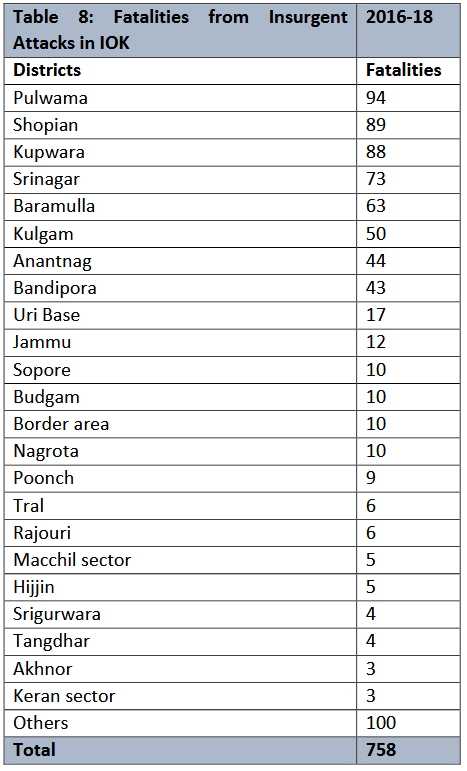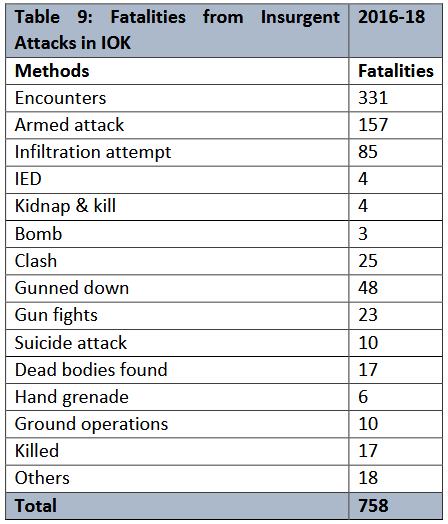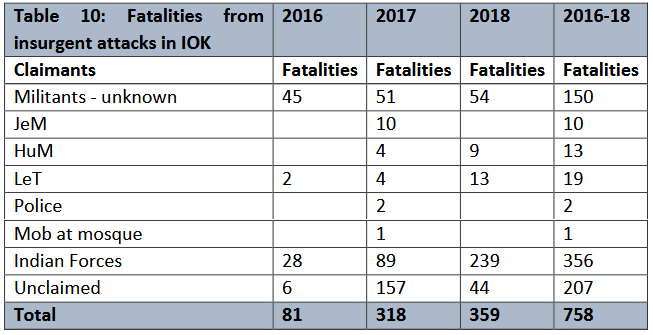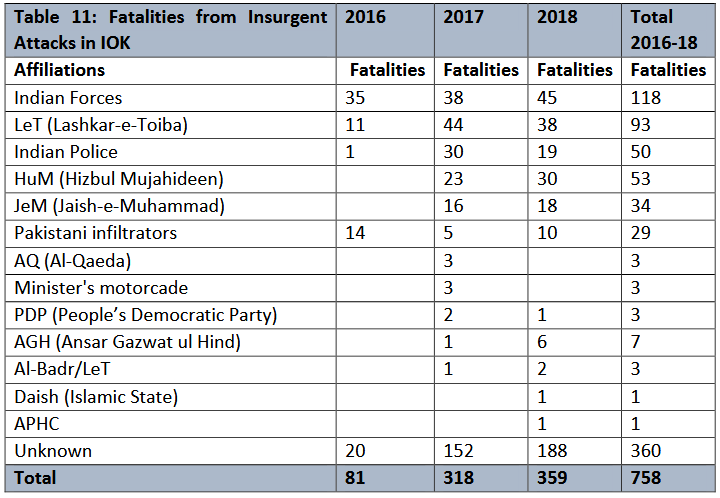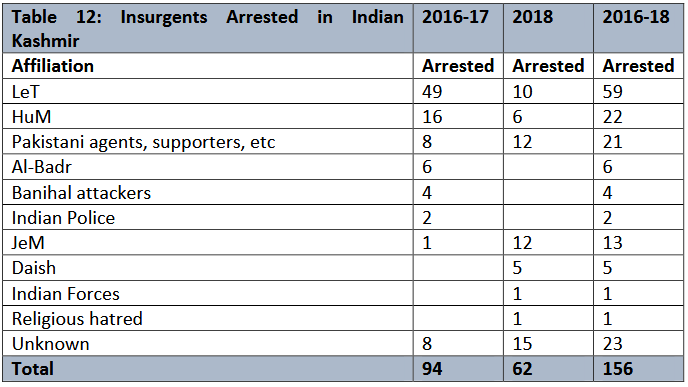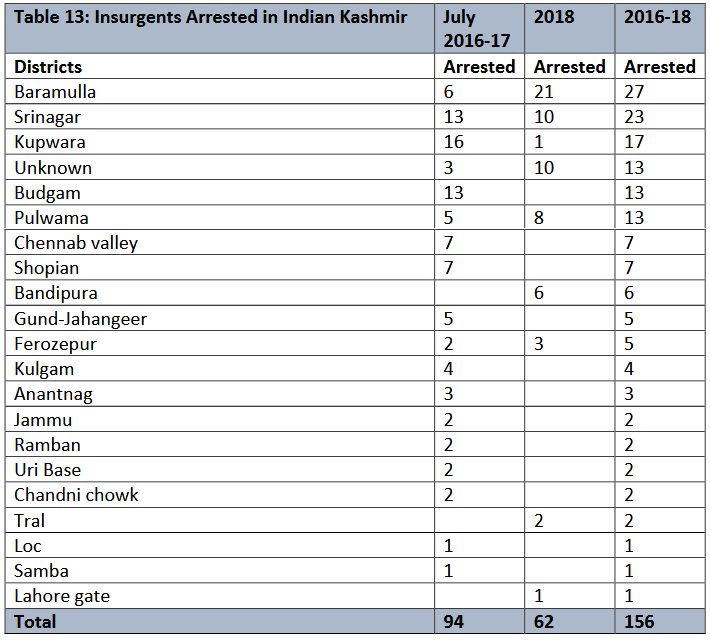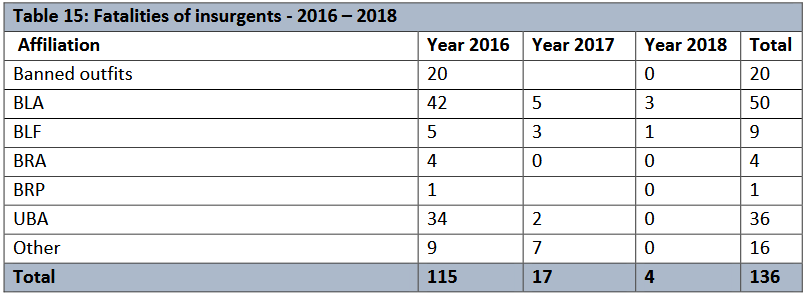Author: Mohammad Nafees
Overview
The recent stand-off between Pakistan and India after the Pulwama suicide attack on February 14 was a reminiscent of similar events in the past that had triggered tensions, if not large-scale hostilities. Two major incidents in 2016 – militant attacks at Pathankot Air Force Station and Uri Army Camp on the 2nd of January 2016 and the 18th of September 2016 respectively – did escalate political tensions and fueled nationalistic, often jingoistic rhetoric. The immediate Indian reaction to these two attacks was to blame them on Pakistan-based militant groups. The arrest in March/April 2016 of the Indian navy commander Kulboshan Jadhav, who was reportedly running an espionage network out of the Iranian port of Chabahar, brought the bilateral relations literally to a standstill. India demanded Jadhav back but Pakistan declined on the grounds that he had confessed having organized terrorist activities in the southwestern Balochistan province. Following his conviction to death by a Pakistani military court, India approached the International Court of Justice (ICJ) to get Jadhav off the hook. The ruling on the spy is expected in the latter half of the year.
This report takes a stock of what both countries have achieved and lost as a result of their dispute over the predominantly Kashmir Valley (Indian-administered Kashmir). It is based on Indian and Pakistani press. No editing is done to the reports that appeared in the Indian and Pakistani press with the basic intent to allow the readers to know how conflicting perspectives are at play and harming the bilateral relationship. Pakistan-based militant groups accused by India for terrorist activities in its part of Kashmir are central to the hostile relations. These include Jaish-e-Mohammed (JeM), Hizbul Mujahideen (HuM), and Lashkar-e-Taiba (LeT) which are very active in the Indian Kashmir as became evident from the number of attacks claimed by them.
Fatalities from Cross-Border Firings in Pakistan
From October 2016 to 2018[1], the cross-border firings from India left 204 persons dead and 351 injured. Civilian casualties were twice the number of security personnel who fell victim to the Indian firings in the border areas of Pakistan (Table 1).
Between October 2016 and 2017, border conflicts inflicted more fatalities as compared to 2018; a reflection of receding tensions between Pakistan and India. The sectors of Nakyal, Battal, Sialkot, Bhimber and Poonch witnessed higher number of fatalities compared to other sectors (Table 2).
Women, children, and elderly people besides soldiers and rangers also paid a price of the conflict because the leadership of both the countries could not resolve their issues through peaceful means (Table 3).
Fatalities from Cross-Border Firings in India
Indian casualties from cross-border firings were almost half of what Pakistan suffered; 278 in India as against 555 in Pakistan. The civilian fatalities in India (49) were almost half of the number of security personnel fatalities (101), which is completely opposite to what Pakistan suffered (Table 4).
The sectors that suffered higher number of fatalities from cross-border firings in India were Poonch, Rajouri, and Samba sectors. Interestingly, both the countries reported human losses from the sectors that are common for India and Pakistan like Poonch, Rajouri, Baramullah, Chapar, Battal, Keran, and others. At Poonch, Rajouri, and Battal sectors, the fatalities were higher for both – Pakistan and India (Table 5).
Like Pakistan, India also suffered from losses of their womenfolk and children because of cross-border firings from Pakistan, reflecting a dilemma of the conflict where innocent people are more vulnerable (Table 6). Although the civilian population of both countries became victims of cross-border firings, the number of such victims in India, for some reasons, are one third of the civilian fatalities in Pakistan – 49 in India and 140 in Pakistan.
Fatalities from Insurgency in Indian Kashmir
Alongside the cross-border firings, the reports of militancy continued appearing in the Indian press. At the end of 2016, there were 81 fatalities from militant attacks in Indian Kashmir. This figure increased threefold in the year 2017 with a further upsurge during the year 2018. Within three years, India witnessed the loss of 757 persons as a result of violence in the Indian Occupied Kashmir (IOK). This was interpreted as insurgency by India while Pakistan treated it as a struggle of freedom fighters against Indian hegemony in the valley. Nearly 60% of the total fatalities from insurgent attacks was of the militants (412) followed by the fatalities of security personnel (197)[2].
As many as 100 foreign militants were also killed during these three years. As claimed by the Indian press, they were Pakistan-based militants who tried to infiltrate into the Indian territory to carry out terror attacks. Besides foreign militants, there were incidents where security officials were found to have defected the Indian Forces and joined the militants. Idrees Ahmad and Zahoor Ahmad Thokar were two security officials who were killed on 6 November 2018 and 16 December 2018 respectively, and were identified as affiliated with Hizbul Mujahideen (HuM). This reflects a situation where insurgency has formed deep roots in the Indian Occupied Kashmir (Table 7).
Among the districts in IOK affected by militancy during 2016-2018, the most affected were Pulwama, Shopian, Kupwara, Srinagar, Baramulla, Kulgam, Anantnag, Bandipora, Uri Base, in addition to many others, based on the fatalities of militants reported from these districts (Table 8).
Two forms of violence; encounters and armed attacks, have been the major causes of fatalities in the Indian Kashmir. A significant number of militants were killed when they allegedly tried to infiltrate into the Indian territory from across the border. Explosive weapons like IEDs, bombs, and hand grenades were also used by the militants. A suicide attack was also carried out in the valley on 30 November 2016 targeting an army base at 166 Artillery Unit of the Army at Nagrota in Jammu and killing seven soldiers and three militants (Table 9).
Three militant outfits; JeM, HuM, and LeT, were very active in the Indian Kashmir as is evident from a number of terror attacks claimed by them. A large number of terror attacks, however, remained unclaimed while nearly 50% of the total fatalities were reported from security operations carried out by Indian Forces (Table 10).
Based on the Indian press reports, the highest number of victims of militancy in the valley were affiliated with the Indian Forces (118), followed by LeT (93), HuM (53), Indian Police (50), JeM (34), and many others. As many as 29 militants were those who were reported to be Pakistani infiltrators[3] whose affiliation with any militant outfit was not identified in the reports. Even Al-Qaida (AQ), and Daish (Islamic State) were reported to be active in Indian Kashmir as they lost some of their militants in the valley in security operations.
Two other militant groups; Al-Badr and Ansar Gazwat ul Hind, also were reported to have presence in the valley. The political parties that suffered the loss of their activists in terror attacks were People’s Democratic Party (PDP) and All Pakistan Hurriyet Conference (APHC). Nearly 50% of the total victims of violence were those whose affiliation was not reported in the Indian press (Table 11).
Insurgents Arrested in Indian Kashmir
Another aspect of the militancy in Indian Kashmir was the number of militants belonging to different militant organizations that were arrested during the last three years. The highest number of militants were associated with LeT (59), HuM (22), Pakistani spies and their supporters (21), Al-Badr (6), JeM (13), and Daish (5). With the exception of one Hindu affiliate of LeT, all others were Muslims.
Of 21 Pakistanis arrested in India, 14 were reported to be taken into custody in Kashmir and the remaining 7 were arrested from Delhi, Meerut, Patiala, Punjab, and UP. In some cases, the names and addresses of Pakistanis were also provided in the reports (Table 12).
Five districts of Indian Kashmir – Baramulla, Srinagar, Kupwara, Budgam, and Pulwama – appeared to be highly affected by militancy based on the number of militants who were arrested from there (Table 13).
Insurgency-Related Incidents in Pakistan
Like India, Pakistan has its own kind of insurgency in its territory but its forms and shapes, in many cases, are very different from the type of insurgency encountered in the Indian Kashmir. The insurgency in Pakistan can be divided in three categories:
- Territorial insurgency
- Religious insurgency
- Political insurgency
Territorial insurgency
It is largely confined within the province of Balochistan where a number of insurgent groups operate and seek a separate homeland or redressal of their grievances. Unlike the separatists of Indian Kashmir, the Baloch separatists do not enjoy a strong following among the people of Balochistan. There were no reports of any Baloch population observing shutter-down strike in protest against the killings of any insurgent by the security agencies as it is reported in the Indian Kashmir. However, the presence of Baloch insurgency is an undeniable fact as it continues inflicting death and destruction in the province of Balochistan; the data collected shows 46 fatalities during 2016-2018 from terror attacks that were carried out by different insurgent groups (Table 14).
As many as 136 insurgents, with known and unknown identities, also lost their lives in security operations during 2016-2018. The insurgent groups who lost the highest number of insurgents were BRA, BLA, BLF and UBA. There were some fatalities of outlaws in security operations in Balochistan where the victims were defined as labor attackers/Mastung attackers, and belonged to some banned outfits. These outlaws are considered to be associated with some insurgent groups as no clear-cut identity was available for them (Table 15).
In the last three years, 70 insurgents were arrested by the security agencies who they claimed were associated with different insurgent groups of Balochistan, like BLA, BRA, BLF, and BNF. Unlike Indian Kashmir, the province of Balochistan did not experience any infiltration of insurgents from across the border. Only one incident of Indian infiltration into Pakistan was recorded in the year 2016 when the famous Indian Agent, Kulbhushan Yadav, was arrested from Balochistan. Soon after his arrest, multiple arrests were made and it was claimed by the security agencies that as many as 500 Indian trained terrorists[4] posing as Muslims had entered Pakistan and were engaged in promoting terrorism and religious conflicts by arousing anti-army sentiments and other anti-state activities. Following this, there were no further reports of the arrested individuals and neither India nor Pakistan ever raised this issue again. However, some of the insurgents belonging to BLA were reported to have been trained by RAW.
Religious Insurgency
The militant groups like Tehreek-e-Taliban, Pakistan (TTP), Al-Qaeda (AQ), Lashkar-e-Islami (LI), Lashkar-e-Jhangvi (LeJ), and Islamic State (Daish), are some of the leading religious insurgent groups which seek to establish the religious system that they believe in but do not aim for having a separate homeland. These militant groups are also accused of having links with Indian and Afghan intelligence agencies to destabilize Pakistan by carrying out terrorist attacks in its territory.
Political Insurgency
MQM is the only mainstream political party whose activists are often arrested with allegations of having links with the Indian intelligence agency – RAW. In 2015, the intelligence agency made a stunning revelation where it found over 200 RAW sleeper cells operating in different municipal organisations of the city, as reported by officials. So far, the data of more than 200 ghost employees of Karachi Water and Sewerage Board and over 100 of the Karachi Metropolitan Corporation has been gathered[5]. We hope to get similar data from the Karachi Development Authority soon. Prior to this finding, the law enforcement agencies had arrested some activists of MQM who were suspected to have had links with RAW[6],[7],[8],[9].
Current Scenario of Pak-India Conflict
On 14 February 2019, a suicide bomber drove his explosive-laden vehicle into a bus of Indian paramilitary convoy near Lethpora village of Pulwama district, killing 44 Indian troops and wounding many. A spokesman of Jaish-e-Mohammad (JeM) claimed responsibility for the attack and informed that the “suicide attack” was carried out by Aadil Ahmad, alias Waqas Commando, a known freedom fighter from the area. The Indian press reported that Adil Ahmad Dar was recorded as a category C militant who, after joining militancy in 2018, was seen with members of terror groups, Jaish-e-Mohammad, Hizbul Mujahideen and Lashkar-e-Taiba, according to officials. “He was not any top gun; he was just like any other militant of Pulwama, and went missing in 2018,” said a police officer posted in South Kashmir on the condition of anonymity[10]. Although Adil was a native Kashmiri, JeM’s claim for the attack provided a good reason for the Indian government to allege Pakistan for involvement in this incident.
This was one of the most daring terror attacks on the Indian paramilitary forces that was bound to generate a fierce reaction from the Indian government. Reacting to the incident, the Indian Prime Minister said, “Pulwama shows the time for talks is over, need to take firm steps now.” Indian officials began making harsh statements against Pakistan. “Enough is enough. The time for talking peace is over and I think it is time to teach them (Pakistan) a lesson, and I hope the Government of India will understand this,” Amarinder Singh, CM of East Punjab said. Communal riots between Hindus and Muslims also broke out in Jammu and Kashmir that targeted people and their properties. Pakistan, on the other hand, continued expressing the desire of having a peace dialogue between both the countries.
Amid these sentiments, India claimed that it carried out a surgical operation inside Pakistani territory, targeting a camp of Jaish-e-Mohammad and leaving about 200-300 militants dead. Pakistan rejected this claim and showed photos of the area where no huge destruction was visible. On the next day of this claim, Pakistan reported the downing of an Indian military aircraft, MiG21, and capturing its pilot, Wing Commander Abhinandan Varthaman, into its custody. While India lacked any solid evidence to prove its claim of blowing up a Jaish camp in Pakistani territory, the downing of Indian aircraft and the capture of the Indian pilot in Pakistan’s custody elicited a reaction in the Indian people whose opinion turned against their government’s claim. Shortly, Pakistan announced its decision to return the IAF pilot. This resulted in causing some embarrassment for the Indian government while a feeling of joy and gratitude resonated throughout India where its people and the media applauded the decision with words of accolades in favor of Pakistan’s Prime Minister.
Although, cross-border firings are still ongoing and casualties continue to be reported from both sides of the border, the current gesture of good will extended by Pakistan by returning the IAF pilot shows that the way to a positive bilateral relationship is through gestures of peace and reconciliation, and not by using guns or terror attacks.
[1] Data on cross-border firing starts from October 2016 because such occurrences escalated soon after the terror attack at Uri Army Camp on 18 September 2016.
[2] These figures don’t include the fatalities of those Kashmiri people who were killed during their protests against the killing of militants in the valley during security operations.
[3] Some other infiltrators were reported to be Pakistani having affiliation with JeM (3), and LeT (15)
[4] https://dailytimes.com.pk/92474/13-more-cohorts-of-nabbed-raw-agent-arrested/
[5] http://www.dawn.com/news/1218392/police-get-data-of-300-ghost-employees-to-look-into-possible-links-with-raw
[6] http://www.dawn.com/news/1181982/remand-of-two-raw-agents-extended
[7] http://www.thenews.com.pk/Todays-News-4-339679-Remand-of-four-RAW-agents-extended-for-a-week
[8] http://tribune.com.pk/story/961103/ctd-arrests-two-suspects-linked-with-foreign-spy-agencies/
[9] http://www.thenews.com.pk/Todays-News-13-41023-RAW-agent-Charge-sheet-submitted-in-Karachi-ATC
[10] https://www.hindustantimes.com/india-news/pulwama-suicide-bomber-had-joined-jaish-just-a-year-ago/story-eQYKtpWiSbRw8NPsFMWFHN.html

